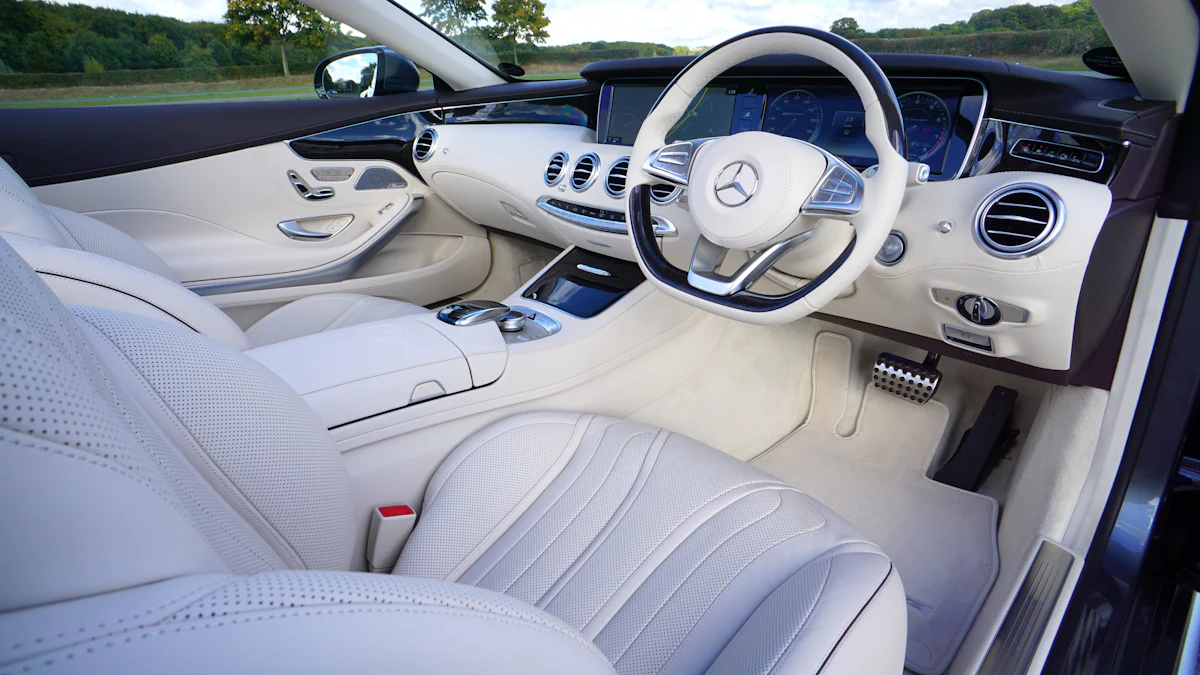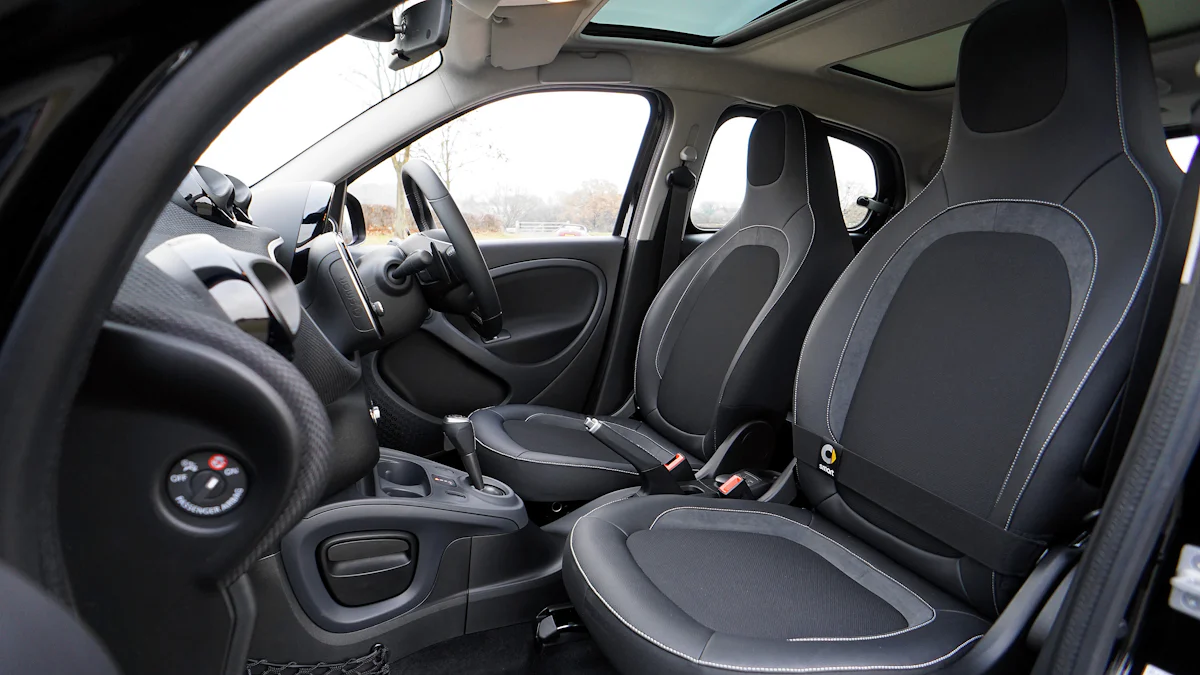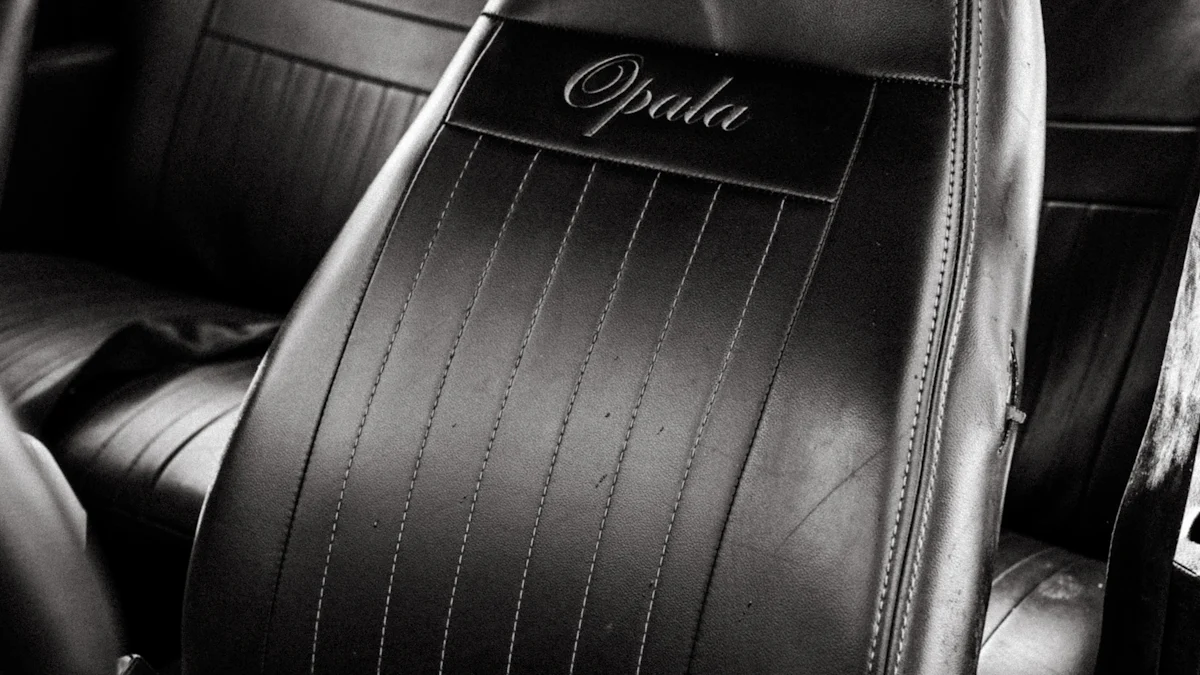
Automotive interior trim plays a crucial role in enhancing the overall driving experience. Quality trims not only elevate the aesthetics of a vehicle but also improve comfort and functionality. The global market for automotive interior trim is projected to grow significantly, reaching an estimated value of $19.4 billion by 2032. This growth underscores the increasing demand for high-quality interior components that offer both style and durability. Investing in premium trims can transform a vehicle’s interior, making it more appealing and comfortable for drivers and passengers alike.
Understanding Automotive Interior Trim
Definition and Purpose
Enhancing Aesthetics
Automotive interior trim significantly enhances the visual appeal of a vehicle’s interior. Designers use various materials, colors, and textures to create a cohesive and attractive look. High-quality trims can transform an ordinary car into a luxurious experience. The choice of trim materials, such as leather, wood, or metal, adds a touch of elegance and sophistication.
Improving Comfort
Comfort plays a crucial role in the overall driving experience. Automotive interior trim contributes to this by providing soft-touch surfaces and ergonomic designs. Padded armrests, cushioned seats, and well-designed dashboards enhance the comfort level for both drivers and passengers. These elements reduce fatigue during long drives and create a pleasant environment inside the vehicle.
Functional Aspects
Automotive interior trim also serves several functional purposes. Trim pieces protect the interior surfaces from wear and tear. They cover sharp edges and joints, ensuring safety. Additionally, trim components often integrate storage solutions, such as cup holders and compartments, enhancing the practicality of the vehicle’s interior.
Historical Evolution
Early Designs
The evolution of automotive interior trim has been remarkable. In the early days of automobile manufacturing, interiors were basic and utilitarian. Materials like wood and metal dominated the design. Comfort and aesthetics were secondary considerations. However, as consumer preferences evolved, so did the focus on interior design.
Modern Innovations
Modern automotive interior trim reflects significant advancements in technology and materials. Innovations include the use of advanced composites, high-quality synthetic leathers, and customizable LED lighting. These developments have transformed car interiors into high-tech, comfortable, and visually appealing spaces. The period from the 1960s to the 1980s saw dramatic changes in car interiors, playing a major role in the success of many car brands. Today, automotive interior trim continues to evolve, reflecting ongoing trends and consumer demands.
Types of Automotive Interior Trim

Dashboard Trim
Materials Used
Dashboard trim often utilizes a mix of materials to balance style, functionality, and cost. Common materials include plastics, leather, and metal. Plastics offer durability and ease of molding into various shapes. Leather adds a touch of luxury and comfort. Metal elements provide a sleek and modern look. Each material contributes to the overall aesthetic and functional appeal of the dashboard.
Design Variations
Design variations in dashboard trim can significantly alter the interior’s look and feel. Some designs feature wood grain finishes for a classic and elegant appearance. Others use carbon fiber or brushed aluminum for a sporty and contemporary vibe. Customizable LED lighting can also enhance the dashboard’s visual appeal. These design options allow car owners to personalize their vehicle interiors according to their preferences.
Door Panels
Common Materials
Door panels use a variety of materials to enhance both aesthetics and functionality. Common materials include fabric, leather, and polymers. Fabric offers a soft-touch feel and is available in numerous colors and patterns. Leather provides a premium look and is easy to clean. Polymers offer durability and resistance to wear and tear. Each material choice impacts the overall interior design and user experience.
Customization Options
Customization options for door panels are extensive. Car owners can choose from different colors, textures, and patterns to match their style. Some panels feature integrated ambient lighting for added ambiance. Custom stitching and embroidery can also add a unique touch. These options enable a high level of personalization, making the vehicle interior truly unique.
Seat Upholstery
Leather vs. Fabric
Seat upholstery materials primarily include leather and fabric. Leather seats offer a luxurious feel and are easy to clean. They provide excellent durability and resistance to spills and stains. Fabric seats, on the other hand, offer a wide range of colors and patterns. They provide a softer and more breathable surface, which can be more comfortable in hot climates. Each material has its own set of advantages, catering to different preferences and needs.
Maintenance Tips
Proper maintenance of seat upholstery is crucial for longevity. For leather seats, regular conditioning helps maintain softness and prevent cracking. Use a damp cloth to wipe away dirt and spills promptly. For fabric seats, vacuuming removes dust and debris. Use fabric cleaners for spot treatments. Avoid harsh chemicals that can damage the material. Regular maintenance ensures that the automotive interior trim remains in excellent condition.
Floor Mats and Carpets
Types of Floor Mats
Floor mats play a crucial role in maintaining the cleanliness and aesthetics of a vehicle’s interior. Various types of floor mats cater to different needs and preferences. Rubber floor mats offer durability and resistance to water and dirt. These mats are ideal for regions with harsh weather conditions. Carpet floor mats provide a plush feel and enhance the interior’s luxury. These mats come in various colors and patterns, allowing customization to match the vehicle’s design. All-weather floor mats combine the benefits of rubber and carpet mats. These mats provide durability while offering a more refined appearance. Custom-fit floor mats ensure a perfect fit for specific vehicle models. These mats cover every inch of the floor, providing maximum protection.
Cleaning and Maintenance
Proper cleaning and maintenance of floor mats extend their lifespan and keep the vehicle’s interior looking fresh. For rubber floor mats, use a hose to rinse off dirt and debris. Apply a mild soap solution and scrub with a brush to remove stubborn stains. Rinse thoroughly and let the mats air dry. For carpet floor mats, vacuum regularly to remove dust and dirt. Use a carpet cleaner to treat stains and spills. Blot the area with a clean cloth and avoid soaking the mat. Allow the mats to dry completely before placing them back in the vehicle. All-weather floor mats require similar cleaning methods as rubber mats. Custom-fit mats may need specific cleaning instructions based on the material used. Regular maintenance ensures that floor mats remain in excellent condition, contributing to a clean and attractive vehicle interior.
Materials Used in Automotive Interior Trim

Leather
Types of Leather
Automotive interior trim often features various types of leather. Full-grain leather offers the highest quality and durability. This leather retains the natural grain, providing a luxurious feel. Top-grain leather undergoes sanding to remove imperfections, resulting in a smooth surface. Corrected-grain leather receives treatment to hide flaws and often includes an artificial grain pattern. Split leather comes from the lower layers of the hide and is less durable but more affordable.
Pros and Cons
Leather provides several advantages for automotive interior trim. It offers a luxurious appearance and feel. Leather is also highly durable and resistant to wear and tear. However, leather can be expensive and requires regular maintenance. Exposure to direct sunlight can cause fading and cracking. Proper care ensures that leather remains in excellent condition.
Fabric
Common Fabrics Used
Fabric materials in automotive interior trim include polyester, nylon, and vinyl. Polyester offers durability and resistance to stains. Nylon provides a soft texture and high strength. Vinyl mimics the look of leather at a lower cost. Each fabric type offers unique benefits and caters to different preferences.
Durability and Maintenance
Fabric materials require specific care to maintain their appearance. Regular vacuuming removes dust and debris. Spot cleaning with mild detergents addresses stains. Avoid harsh chemicals that can damage the fabric. Proper maintenance extends the lifespan of fabric automotive interior trim.
Wood and Faux Wood
Real Wood vs. Faux Wood
Wood and faux wood offer distinct options for automotive interior trim. Real wood provides a natural and elegant look. It adds a touch of luxury and sophistication. Faux wood mimics the appearance of real wood but uses synthetic materials. Faux wood offers greater durability and resistance to environmental factors.
Aesthetic Appeal
Both real wood and faux wood enhance the aesthetic appeal of a vehicle’s interior. Real wood offers a unique grain pattern and rich texture. Faux wood provides a consistent appearance and can replicate various wood types. Both options contribute to a refined and stylish automotive interior trim.
Plastic and Composites
Types of Plastics
Automotive interior trim often incorporates various types of plastics due to their versatility and cost-effectiveness. Polypropylene (PP) is a common choice. This material offers excellent resistance to chemicals and moisture. Acrylonitrile Butadiene Styrene (ABS) provides high impact resistance and toughness. Polyvinyl Chloride (PVC) is another popular option. This plastic offers flexibility and durability. Polycarbonate (PC) is used for its strength and transparency. Each type of plastic contributes unique properties to automotive interior trim.
Advantages and Disadvantages
Plastics offer several advantages for automotive interior trim. These materials are lightweight, reducing the overall weight of the vehicle. Plastics also provide excellent moldability, allowing for intricate designs and shapes. The cost-effectiveness of plastics makes them an attractive option for manufacturers. Additionally, plastics offer resistance to wear and tear, ensuring longevity.
However, plastics have some disadvantages. Exposure to high temperatures can cause deformation. Some plastics may emit volatile organic compounds (VOCs), affecting air quality inside the vehicle. The environmental impact of plastic production and disposal raises concerns. Despite these drawbacks, the benefits of plastics make them a prevalent choice in automotive interior trim.
Product Information:
- FitMyCar Custom-Fit Floor Mats use high-quality rubber and carpet options. These mats protect against dirt, water, and spills. FitMyCar offers competitive pricing, up to 75% less costly than car dealer sets.
- ACC Brand Floor Mats enhance the interior’s look while protecting the carpet from foot traffic. ACC offers a wide range of colors and options, including carpet cargo mats.
Maintenance and Care Tips
Regular Cleaning
Recommended Products
Maintaining the cleanliness of automotive interior trim requires the use of high-quality products. Chemical Guys Total Interior Cleaner offers a versatile solution for various surfaces, including leather, fabric, and plastic. 303 Interior Cleaner provides a non-greasy finish and effective stain removal. Meguiar’s Quik Interior Detailer ensures a clean and polished look without leaving residue. These products help preserve the appearance and longevity of interior trim materials.
Step-by-Step Cleaning Guide
- Vacuum the Interior: Start by vacuuming all surfaces to remove loose dirt and debris.
- Apply Cleaner: Spray the chosen cleaner onto a microfiber cloth. Avoid spraying directly onto surfaces to prevent oversaturation.
- Wipe Down Surfaces: Gently wipe down all interior surfaces, including the dashboard, door panels, and seats. Use circular motions for even coverage.
- Clean Crevices: Use a soft brush to clean hard-to-reach areas and crevices.
- Dry Surfaces: Use a dry microfiber cloth to remove any excess cleaner and moisture.
- Condition Leather: For leather surfaces, apply a leather conditioner to maintain softness and prevent cracking.
Protecting Against Wear and Tear
Use of Protective Covers
Protective covers play a crucial role in preserving the condition of automotive interior trim. Seat covers protect upholstery from spills, stains, and wear. Dashboard covers shield against UV rays, preventing fading and cracking. Floor mats protect carpets from dirt and moisture. Investing in high-quality protective covers extends the lifespan of interior components.
Avoiding Direct Sunlight
Direct sunlight can cause significant damage to automotive interior trim. UV rays lead to fading, cracking, and discoloration of materials. Park the vehicle in shaded areas or use a car cover to minimize sun exposure. Window tints also provide protection by blocking harmful UV rays. Regularly applying UV protectant sprays to surfaces adds an extra layer of defense.
Dealing with Stains and Spills
Immediate Actions
Immediate action is essential when dealing with stains and spills. Blot the affected area with a clean cloth to absorb as much liquid as possible. Avoid rubbing, as this can spread the stain. Use a mild detergent solution to treat the stain. Apply the solution to a cloth and gently dab the stain. Rinse with a damp cloth and blot dry.
Deep Cleaning Methods
For stubborn stains, deep cleaning methods may be necessary. Steam cleaning offers an effective solution for fabric and carpet surfaces. The steam penetrates deep into fibers, loosening dirt and stains. Leather cleaners provide specialized treatment for leather surfaces. Apply the cleaner with a soft cloth and follow with a conditioner. Enzyme-based cleaners work well for organic stains, breaking down proteins and eliminating odors. Regular deep cleaning ensures that automotive interior trim remains in pristine condition.
Rother, an expert in automotive interior materials, emphasizes the importance of using sustainable and durable materials. He states, “More sustainable interior surface materials that are also good-looking, durable, easy-to-maintain and clean will get more attention from car users.” This highlights the growing demand for materials that offer both aesthetic appeal and long-lasting quality.
Additional Resources and Recommendations
Product Recommendations
Best Cleaning Products
Maintaining the cleanliness of automotive interior trim requires high-quality cleaning products. Chemical Guys Total Interior Cleaner provides a versatile solution for various surfaces, including leather, fabric, and plastic. This cleaner offers effective stain removal without leaving residue. 303 Interior Cleaner delivers a non-greasy finish and works well on multiple materials. Meguiar’s Quik Interior Detailer ensures a polished look and protects against UV damage. These products help preserve the appearance and longevity of interior trim materials.
Protective Accessories
Protective accessories play a crucial role in preserving the condition of automotive interior trim. Seat covers protect upholstery from spills, stains, and wear. High-quality seat covers extend the lifespan of seats and enhance comfort. Dashboard covers shield against UV rays, preventing fading and cracking. These covers maintain the dashboard’s appearance and functionality. Floor mats protect carpets from dirt and moisture. Custom-fit floor mats offer maximum protection and a perfect fit for specific vehicle models. Investing in these protective accessories ensures the interior remains in excellent condition.
Related Articles and Guides
Links to Further Reading
For those interested in learning more about automotive interior trim, several resources provide valuable insights. The article “The Evolution of Car Interiors: From Basic to Luxurious” explores the historical changes in automotive interior design. “Choosing the Right Materials for Your Car’s Interior” offers guidance on selecting the best materials for aesthetics and durability. “Maintenance Tips for Long-Lasting Car Interiors” provides practical advice on keeping interiors in top shape. These articles offer in-depth information and expert tips for car enthusiasts.
Expert Tips and Advice
Experts in automotive interior materials emphasize the importance of using sustainable and durable options. Rother, an industry specialist, states, “More sustainable interior surface materials that are also good-looking, durable, easy-to-maintain and clean will get more attention from car users.” This highlights the growing demand for materials that offer both aesthetic appeal and long-lasting quality. Experts recommend regular maintenance and the use of high-quality products to ensure the longevity of automotive interior trim.
Automotive interior trim plays a vital role in enhancing the aesthetics, comfort, and functionality of vehicles. High-quality trims transform the driving experience by providing luxurious and durable interiors. Car owners should apply the tips and recommendations provided to maintain their automotive interior trim. Regular cleaning and the use of protective accessories ensure longevity. Explore additional resources and stay updated on the latest trends and innovations in automotive interior trim. Cleanliness remains a top priority for car users in the USA and Germany, highlighting the importance of maintaining pristine interiors.
Post time: Jul-24-2024



